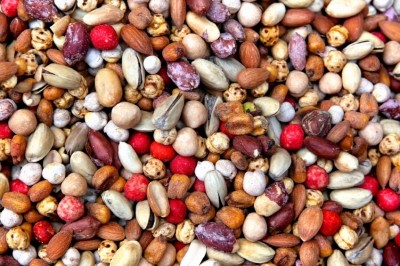Beans beat meat for satiety thanks to filling fibre

According to the Danish scientists, little is known about the effect of these vegetable proteins on appetite regulation.
As part of the 43-strong study, the researchers from the University of Copenhagen gave a protein-rich meal which contained either veal and pork or beans and peas, and a low protein pulse meal. The researchers found that those in the high protein pulse group are 12% fewer calories in their following meal compared to the meat-based meal.
They also found that the low-protein meal based on legumes was rated as being both as satiating and as palatable as the high-protein meat-based meal.
Professor Anne Raben of the University of Copenhagen's department of nutrition, exercise and sports and lead researcher said: "The protein-rich meal composed of legumes contained significantly more fibre than the protein-rich meal of pork and veal, which probably contributed to the increased feeling of satiety."
"It is somewhat contrary to the widespread belief that one ought to consume a large amount of protein because it increases satiety more,” she said. “Now, something suggests that one can eat a fibre-rich meal, with less protein, and achieve the same sensation of fullness.
“While more studies are needed for a definitive proof, it appears as if vegetable-based meals - particularly those based on beans and peas - both can serve as a long term basis for weight loss and as a sustainable eating habit."
Recently, the Nordic Nutrition Recommendations were revised to reflect the issue on environmental impact of food production, recommending a reduction in consumption of protein from animal sources such as beef and pork and an increase in vegetable sources such as legumes and pulses.
The UK and China have taken similar steps.
Eating habits have yet to catch up with changes in nutrition guidelines, however, and the authors write that the average Dane eats around 137 g of meat and meat products per day compared with just 7 g of legumes. They suggest this could be due to palatability, gastrointestinal discomfort and - probably even more importantly – the fact that legumes are not part of a typical Western dietary culture.
Study details
The high protein meat patties contained 19% protein, 53% carbohydrate and 6 g fibre per 100 g while the high protein pulse patties packed in 19% protein, 53% carbohydrate and 25 g of fibre. There was also a low protein pulse patty which provided 9% protein, 62% carbohydrate and 10 g fibre per 100 g.
The test meal was eaten within 15 minutes, following which the participants filled in a number of visual analog scales at regular intervals to assess aspects such as palatability and taste preferences.
Three hours later, the men were served lunch (pasta bolognese and 300 ml water) and told to eat as much as they liked until comfortably full.
The high protein pulse meal was rated significantly poorer than the other two meals, but no difference was found for the high protein meat and low protein pulse patties.
Participants were also questioned on their desire to eat something fatty, sweet, salty or meaty after each meal and found no difference between the meals.
The study was conducted as part of the OPUS project, ‘Optimal well-being, development and health for Danish children through a healthy New Nordic Diet’.
Source: Food & Nutrition Research
First published online 19 October 2016, http://dx.doi.org/10.3402/fnr.v60.32634
“Meals based on vegetable protein sources (beans and peas) are more satiating than meals based on animal protein sources (veal and pork) – a randomized cross-over meal test study”
Authors: Marlene D. Kristensen, Nathalie T. Bendsen, Sheena M. Christensen, Arne Astrup and Anne Raben


























